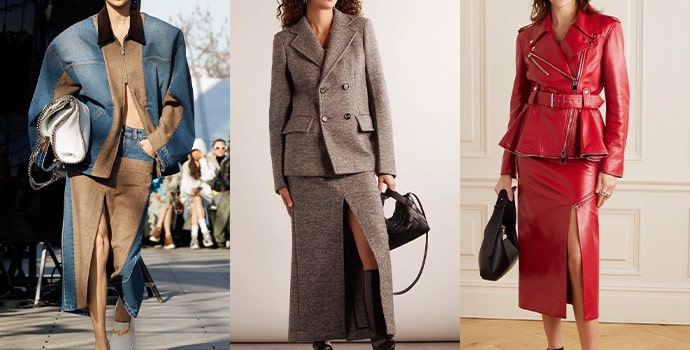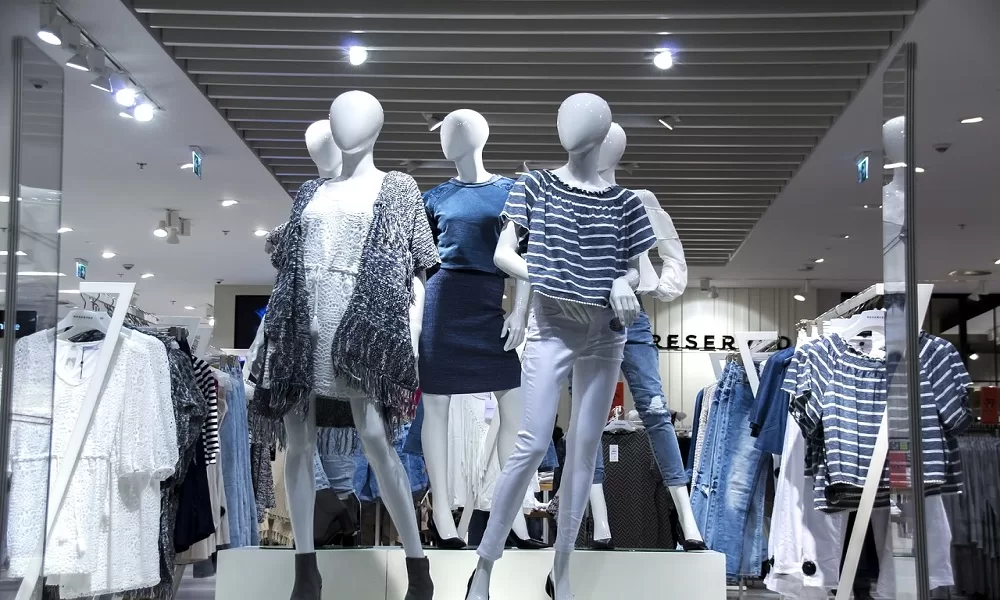How Fabric Weight Impacts Comfort in Branded Clothing
How Fabric Weight Impacts Comfort in Branded Clothing
Blog Article
Understanding Clothing: The Value of Material Choices in Your Wardrobe
The option of material in clothing plays an essential function in both aesthetics and capability. Various materials use varying degrees of toughness, comfort, and breathability, directly affecting the user's experience. Comprehending these nuances can boost one's closet substantially. Several overlook exactly how these selections can impact not just personal design, yet likewise sustainability. What material decisions could redefine your wardrobe and straighten it with both style and duty?
The Function of Fabric in vogue and Performance

Typical Material Kinds and Their Features
When choosing clothes, recognizing the characteristics of typical material kinds is crucial for making educated options. Cotton, a widely-used all-natural fiber, is understood for its breathability, flexibility, and soft qualities, making it ideal for casual wear and day-to-day garments. Linen, one more all-natural choice, flaunts outstanding moisture-wicking residential or commercial properties and an unique appearance, ideal for warm climates.Wool, typically preferred for its warmth and sturdiness, varies in fineness; merino wool is soft versus the skin, while coarser types are made use of for outerwear. Synthetic materials like polyester and nylon provide resilience and resistance to wrinkles, making them popular for activewear and traveling garments. Blends, which combine synthetic and natural fibers, can boost functionality while preserving convenience. By recognizing these textile attributes, individuals can pick clothes that straightens with their way of living and aesthetic preferences.
Breathability and Convenience: Picking the Right Fabrics for Various Environments
Selecting the appropriate textiles for different environments can considerably boost comfort and general wearability. Breathable materials are essential in hot environments, as they permit air circulation and dampness evaporation. Fabrics such as cotton, bed linen, and moisture-wicking synthetics effectively draw sweat away from the body, keeping the wearer cool and completely dry. Alternatively, in cooler environments, thicker materials like wool or fleece supply insulation while retaining breathability, making sure heat without overheating.Additionally, the option of material weight plays an important function; lightweight fabrics are better for summer, whereas heavier choices are matched for winter wear. Comprehending the special residential or commercial properties of each textile allows people to dress properly for differing weather. Ultimately, selecting comfortable and breathable fabrics tailored to specific environments can greatly boost daily comfort and enhance the general experience of using garments.
Durability and Care: Just How Textile Influences Long Life of Your Closet
Picking the right materials can considerably impact the resilience and care requirements of a wardrobe. Fabrics such as cotton and polyester are recognized for their durability and simplicity of upkeep, making them suitable for everyday wear. On the other hand, delicate materials like silk and lace call for even more cautious handling and specialized cleaning approaches, which can enhance the moment and initiative needed for care. Branded Clothing.Durability is additionally affected by the textile's weave and surface; tightly woven textiles have a tendency to resist wear and tear better than freely woven alternatives. In addition, artificial blends often give improved longevity, incorporating the best top qualities of several fibers.Understanding the treatment directions for each textile is necessary, as improper washing or drying out can lead to premature wear. Inevitably, picking long lasting products can bring about a longer-lasting wardrobe, lowering the regularity of replacements and adding to a much more lasting style selection
The Effect of Fabric on Fit and Shape

Lasting Material Options: Making Eco-Friendly Decisions
The effect of textile extends past fit and silhouette to incorporate environmental factors, motivating a growing passion in lasting fabric choices. Green textiles, such as natural cotton, hemp, and Tencel, are acquiring grip amongst customers who focus on sustainability in their wardrobes. These materials are frequently created with less chemicals and water, decreasing their eco-friendly footprint.Additionally, recycled materials, made from post-consumer waste, provide an innovative solution to the fabric sector's air pollution problem. Brands significantly embrace transparency in their sourcing methods, permitting consumers to make educated choices concerning their purchases.Choosing lasting materials not only supports honest techniques but likewise urges the fashion business to adopt more accountable manufacturing methods. As recognition of environmental concerns climbs, individuals are urged to reflect on the long-lasting effect of their fabric choices, cultivating an activity towards an extra environmentally aware and sustainable strategy to style.
Elevating Style: Just How Fabric Can Transform an Attire
While lots of might concentrate on shade and cut when choosing an attire, the option of material plays an important function in elevating style and enhancing total look. Different products communicate unique moods and messages; for instance, silk exudes deluxe and class, while jeans offers an informal, unwinded ambiance. The texture and drape of a fabric can considerably alter the silhouette, with organized fabrics offering a polished look and softer ones producing a much more fluid, relaxed aesthetic.Moreover, the weight of the textile influences wearability throughout periods. Lightweight textiles like linen and cotton are optimal for summer, while much heavier materials such as woollen and velvet provide warmth and elegance in cooler months. Recognizing textile residential or commercial properties, such as breathability and stretch, also equips people to make educated selections that enhance convenience without endangering style. Ultimately, the ideal material can change an outfit from average to phenomenal, making it a crucial factor to consider in any wardrobe.
Often Asked Questions
Just how Do I Identify the Material Material of My Apparel?
To determine material web content, one can check out care tags, conduct shed examinations for fiber recognition, or get in touch with textile swatches. These techniques assist set apart products, making certain notified choices for clothes care and upkeep in everyday wear.
Can Fabric Choice Affect My State Of Mind or Self-confidence?
Material choice can considerably affect an individual's state of mind and self-confidence. Branded Clothing. Specific products may stimulate feelings of comfort or sophistication, while others can feel restrictive or unflattering, eventually influencing self-perception and emotional wellness throughout the day
What Fabrics Are Finest for Sensitive Skin?
For individuals with sensitive skin, all-natural textiles like cotton, linen, and bamboo are commonly suggested. These materials are breathable, hypoallergenic, and less most likely to create irritation, making them suitable choices for comfort and skin wellness.
Just how Do I Effectively Laundry and Look After Different Fabrics?
To appropriately wash and care for different materials, one must think about each material's details requirements, including temperature level setups, cleaning agents, and drying techniques, guaranteeing durability and maintaining the textile's original qualities for suitable usage.
Are There Certain Fabrics for Athletic or Performance Use?
Athletic or efficiency wear typically utilizes materials such as spandex, nylon, and polyester. These materials are designed for moisture-wicking, breathability, and flexibility, boosting motion and convenience throughout exercises while supplying toughness and assistance. Alternatively, in cooler environments, thicker fabrics like wool or fleece supply insulation while maintaining breathability, ensuring heat without overheating.Additionally, the selection of material weight plays an essential duty; light-weight textiles are more effective for summer, whereas larger choices are matched for winter wear. In comparison, fragile products like silk and lace need even more cautious handling and specialized cleansing approaches, which can raise the article source time and initiative required for care.Durability is also influenced by the material's weave and coating; tightly woven textiles often tend to stand up to wear and tear far better than loosely woven choices. In comparison, rigid materials can limit movement but provide a timeless, sleek look.Moreover, the density and appearance of the fabric can influence the aesthetic assumption learn the facts here now of body form. The effect of fabric prolongs past fit and silhouette to include ecological factors, prompting a growing passion in sustainable material selections. The structure and drape of a material can drastically alter the shape, with organized materials providing a refined appearance and softer ones producing a more fluid, unwinded aesthetic.Moreover, the weight of the fabric affects wearability across seasons.
Report this page